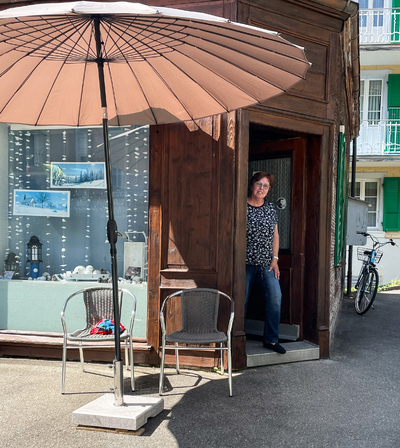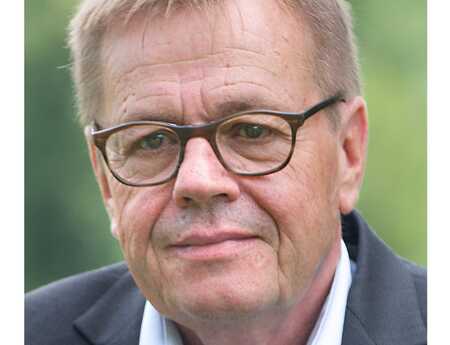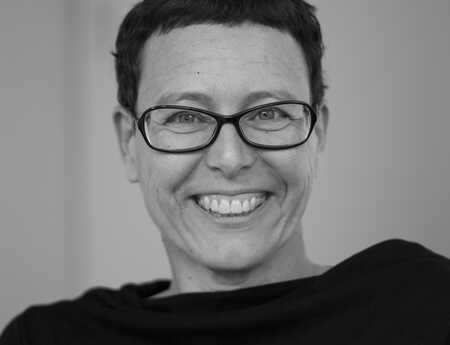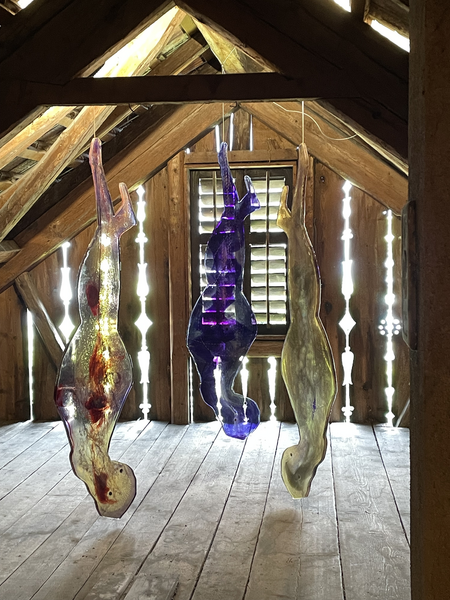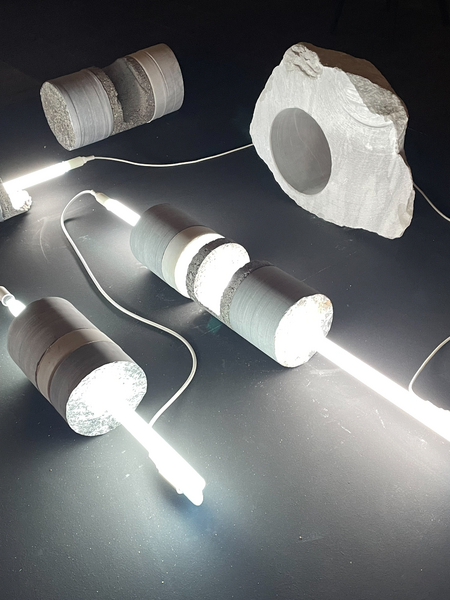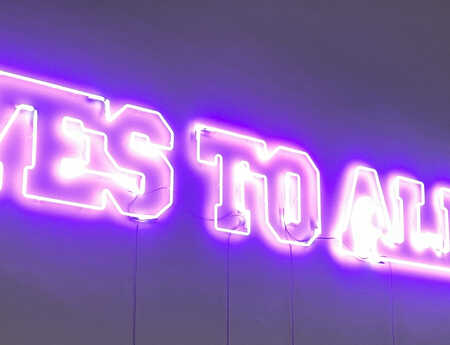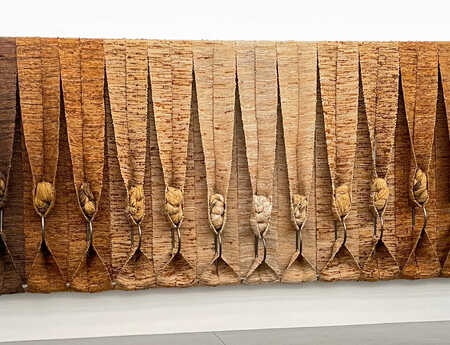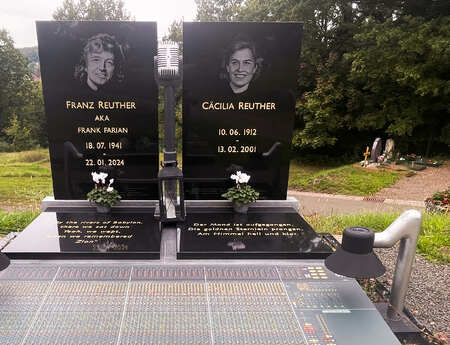I Spy With My Little Eye
Art is. Seeing it! You don't always need a white cube, a museum, an exhibition hall, a gallery, or a sculpture garden. Anyone who wants to see art needs an agenda, needs to look closely, and needs to set out on a journey.
In the summer of 2024, one route led to Engelberg in central Switzerland. Backstage was the title of an exhibition showcasing contemporary art free of charge and in places where you might never expect it – in the lobby of a luxury hotel, in an abandoned workshop, in a former ice cellar, in an attic, in front of an old barn, in a bakery that had been abandoned for decades, in a fondue parlour with a wood-burning stove and (small) chequered curtains, or in any other ‘lost places’.
‘A Declaration of Love to the Community’ is what the initiators called their exhibition. It was curated by Zurich gallery owner Peter Kilchmann and the independent exhibition maker Dorothea Strauss. 53 artists from 18 nations were on display in otherwise often inaccessible locations: 39 from Dorothea Strauss' network, and 14 artists represented by Galerie Kilchmann in Zurich and Paris.
The artworks – paintings, photographs, objects, sculptures, drawings, installations, sound pieces, and video works – all dealt with the issues of our time: climate change, sustainability, and socio-political developments. They touched on issues that concern each and every one of us: identity, harmony, past and future. In times of collective social uncertainty, it was all about creating space for curiosity, a sense of discovery, and the desire for change. It is never a bad thing to change one's own point of view; it is beneficial and enriches your own thinking and that of others. Especially in a village that thrives on tourism.
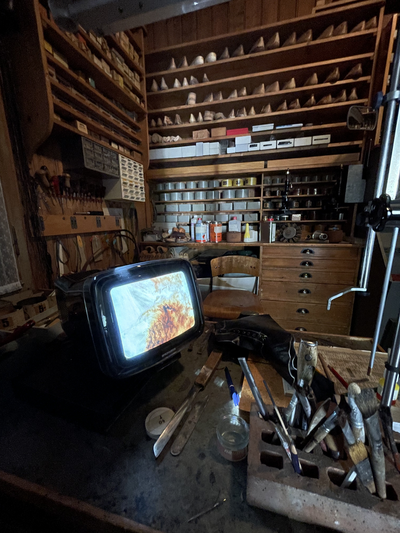
Ways to art
Engelberg, a 900-year-old monastic village in the middle of the mountains, is somewhat outdated. The village has known better times. The hillsides are covered with holiday homes. In addition to mountain-loving hikers, the streets are mainly filled with Bollywood fans from the Far East and heat refugees from the Middle East. The tourism management focuses on guests from afar. Billboards and signposts in Arabic, Hindi, and Chinese characters are a matter of course. English is the language spoken downtown. You rarely hear Schwyzerdütsch spoken. At Heidi Waser's, for example. She is one of many volunteers, young people or seasoned Engelberg residents, who supervised the art exhibits and offered explanations when needed. In late July, she stands in front of the Shoemaker's Cottage, one of the highlights of the exhibition, which is free of charge for visitors. Her great-grandfather's workshop was closed in 1996. For the first time, it is now open again as part of Backstage. The place is just as it used to be – unchanged and untouched for almost 30 years. Inside you will find mouldings, sewing machines, and working tools from a long-dead craftsman. A journey into the past. Olaf Nicolai, who lives in Berlin and teaches at the Academy of Arts in Munich, initially had no desire to add anything to the place, so fascinated was he when he entered the little house for the first time. In the end, he opted for an ‘intervention’: in the summer of 2024, an outdated television set stands in the middle of the old workshop. On the screen, images of distant galaxies are shown in a film backed by song: images of the Carina Nebula, a bright emissive nebula around 7,700 to 9,600 light years away from Earth. In the defunct workshop of an almost extinct craft, visitors are briefly immersed in images of time and eternity. Future, past, and present become one all at once. Right next door, at a five-star hotel by the thermal gardens, the young receptionist speaks English. Here, the Frankfurt artist Anselm Baumann has erected an object something halfway between a vase and a sculpture, which he calls ‘Schöne Aussicht' (Beautiful View). Engelberg certainly knows a thing or two about beautiful views. The landscape and alpine scenery have been skilfully staged there for many years – prestigious and profitable. Here, as everywhere else in the village, the very moment is celebrated. A majestic-looking giant sculpture by Leiko Ikemuras stands in front of the hotel in the middle of the thermal gardens, a kind of walk-in hare woman, as self-assured as she is a promotional figure. The fact that a few cute alpine chamois, also cast in bronze, are out grazing nearby is surely a deliberate contrast; art meets kitsch – or vice versa.
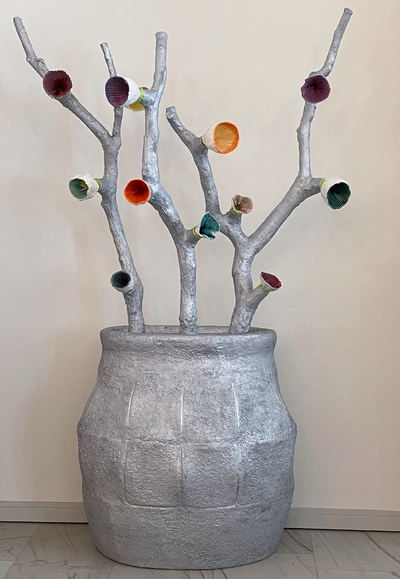
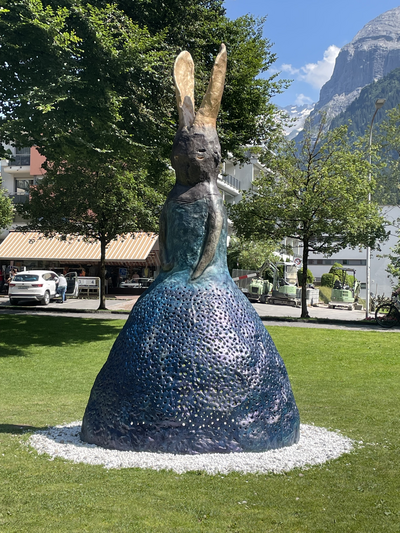
A few metres away, the former bowling lane of the Hotel Engelberg is well signposted. In the damp, dark tube, where only the mechanism of the bowling ball return mounted along the side wall is a reminder of the room's former use, Zilla Leutenegger projects drawings that integrate the shadows of the visitors into the projections. Her installation ZillaGorilla visualises the importance of spaces as repositories of memories, as places of desire, of fears and dreams, but also of hopes.
In the former Pfisterhuesli (bakery), the tarot card representing the hanged man was the starting point for Fabian Marti's exploration of the limits of human knowledge. Scintillating resin torsos with a human outline he suspends upside down in the attic.
Séverin Guelpa, who lives in Geneva, also centres around social, ecological, and political challenges in the context of technological and territorial developments. He probes the possibilities of future coexistence in a former oxen shed. In his work De profundis terrae, he explores the visible traces of climate-induced change in high-alpine landscapes.
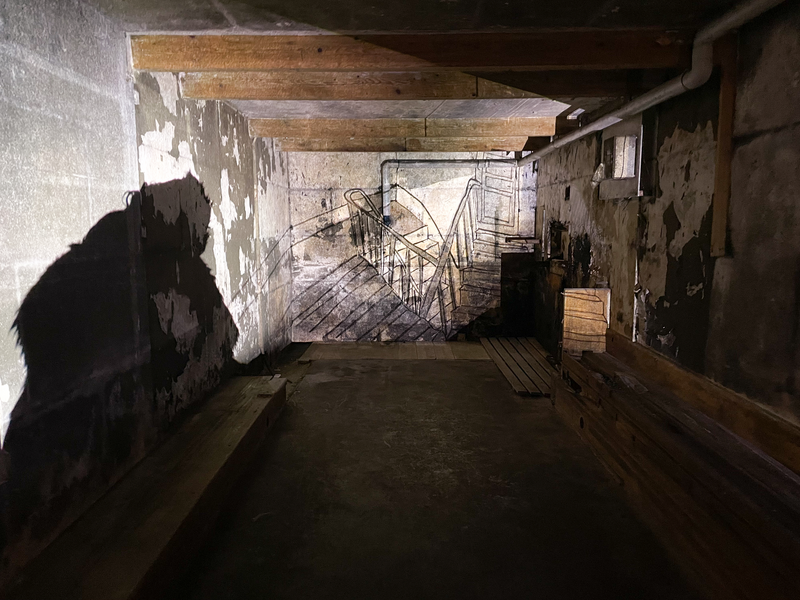
Not your usual summer sculpture park
In Engelberg, art did not retreat to the backstage. Here, in the middle of the village, eeriness collided with cosiness, and the seemingly idyllic village setting crashed with artistic creativity. It was precisely for this reason that the show clearly stood out from the usual open-air summer exhibitions, especially from the ones that tourism managers organise with randomly selected outdoor sculptures to attract more visitors into their communities. The exhibition in Engelberg, together with a well-formulated audio guide, created an alternative landscape of a place shaped by tourism. The guide's texts had little in common with the conventional depictions used in museal contexts, most of which only nourish the discourse of an otherworldly art bubble. What they encouraged visitors to do was to see what there was to see and to sharpen their view of the world.
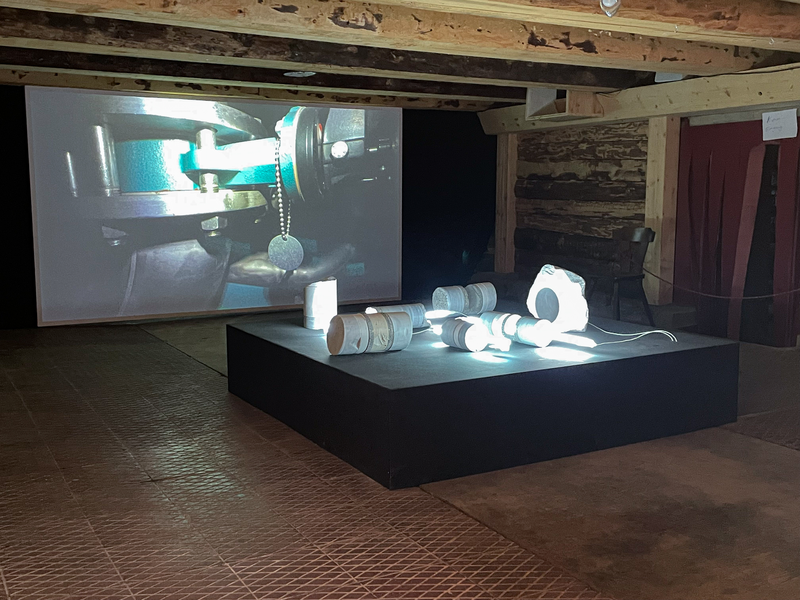
The article was written by Willy Hafner in German.

